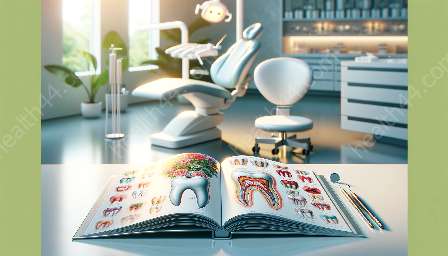Pediatric dental materials have come a long way, with ongoing research and advancements aimed at improving pediatric dental care. These developments are closely linked to tooth anatomy and play a crucial role in promoting oral health in children. This topic cluster will delve into the current research and advancements in pediatric dental materials, exploring their impact on pediatric dental care and how these developments are intertwined with tooth anatomy.
Understanding Pediatric Dental Care
Pediatric dental care focuses on the oral health of children, from infancy through the teenage years. It encompasses preventive care, diagnostics, and treatments tailored to the unique dental needs of children. A key component of pediatric dental care is the use of specialized dental materials that are safe, durable, and suitable for a child's developing teeth and gums.
The Significance of Tooth Anatomy
Tooth anatomy plays a pivotal role in the development and function of the dentition. Understanding the structure of primary and permanent teeth is essential for designing dental materials that can effectively address various dental issues in children. Advancements in pediatric dental materials take into account the intricacies of tooth anatomy to maximize their efficacy while minimizing any potential risks.
Current Research in Pediatric Dental Materials
The field of pediatric dental materials is constantly evolving, driven by ongoing research initiatives. Researchers are exploring innovative materials and technologies that offer improved strength, aesthetics, and biocompatibility. Biodegradable and bioactive materials are being investigated to promote natural healing and tissue regeneration, particularly in pediatric dental applications.
Advancements in Restorative Materials
Recent research has focused on developing advanced restorative materials for treating dental caries and structural defects in pediatric patients. Nanotechnology is being integrated into dental materials to enhance their mechanical properties and provide better adhesion to tooth structure. These advancements aim to provide long-lasting restorations with minimal invasiveness.
Biocompatible and Hypoallergenic Materials
Another area of research is centered around the development of biocompatible and hypoallergenic materials for pediatric dental use. These materials are designed to minimize allergic reactions and adverse tissue responses, ensuring their safety for use in children with varying sensitivities.
Advancements in Preventive Materials
Preventive dental materials play a crucial role in maintaining the oral health of children and preventing dental problems. Current research is exploring novel materials for sealants, fluoride varnishes, and antibacterial agents aimed at inhibiting the progression of dental caries and protecting the teeth from acid erosion.
Smart and Bioactive Materials
Smart materials with the ability to release therapeutic agents in response to specific oral conditions are being developed to enhance preventive strategies in pediatric dental care. Bioactive materials, such as remineralizing agents, are also being studied for their potential to reverse early stages of tooth decay and strengthen the tooth structure.
Linking Pediatric Dental Materials to Tooth Anatomy
The advancements in pediatric dental materials are closely linked to tooth anatomy, as these materials need to interact harmoniously with the natural structure of the teeth. The composition, surface characteristics, and bonding properties of dental materials are tailored to align with the unique features of primary and permanent teeth, ensuring optimal performance and longevity.
Adapting to the Developing Dentition
The continuous changes in the dental anatomy of children necessitate dental materials that can adapt to the evolving dentition. Research in this area focuses on creating materials that accommodate the growth of teeth, promote proper occlusal development, and offer adequate support to newly erupted teeth.
Impact on Pediatric Dental Care
The research and advancements in pediatric dental materials have a profound impact on pediatric dental care. By incorporating state-of-the-art materials, pediatric dentists can deliver more effective and comfortable treatments, leading to improved outcomes and a positive dental experience for children. Additionally, the use of advanced dental materials contributes to the longevity of restorations and the prevention of oral diseases in pediatric patients.
Conclusion
The field of pediatric dental materials continues to evolve, driven by research endeavors and technological innovations. These advancements are paramount in enhancing pediatric dental care and are closely intertwined with the intricate landscape of tooth anatomy. By staying at the forefront of these developments, pediatric dental practitioners can provide high-quality, tailored care that promotes the oral health and well-being of children.


